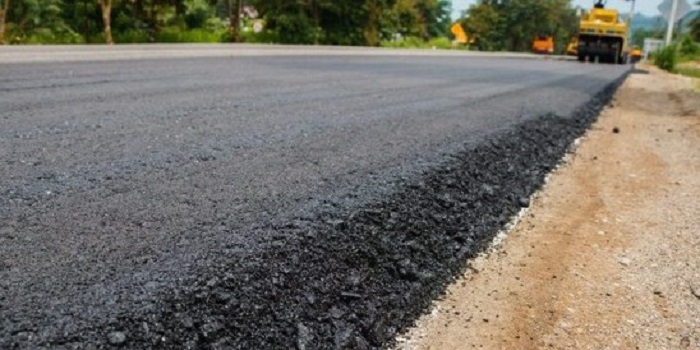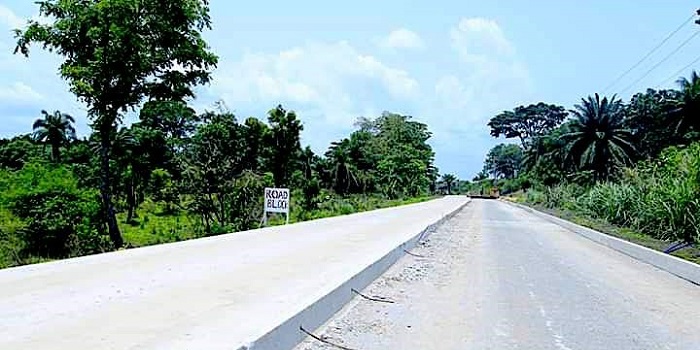
Classification / Types of Roads in Nigeria And Their Detail
- Posted by Ikenna N.
- On July 11, 2025
- 4 Comments
There are several classifications or types of roads in Nigeria. Road transportation is a crucial component of any nation’s infrastructure. This article by TheArchitect describes how roads are categorized depending on a variety of elements, including materials, geographic locations, and traffic.
Table of Contents
What is a Road Defined as ?
Road is a paved path, a route, or a highway that allows cars to transport people to their destinations.
Classification or Types of Roads
Roads can be classified according to the following heading:
- Materials
- Location & function
- Traffic volume
- Traffic type
Types of Roads – Classification by Materials
1. Earthen Roads

Soil is used to lay down earthen roads. They are more affordable than any kind of road. This type of road is available in rural or urban regions with little traffic. Having a good drainage system ensures outstanding performance of the road over a longer period of time. The available soil is spread out in two to three layers, and the road’s surface is compacted with a rammer to remove any surplus spaces.
2. Gravel Roads

Gravel roads are the second cheapest among all the types of roads and they are also better than Earthen roads. This pavement is made of a compacted mixture of gravel and earth. Metal roads are another name for gravel roads. These roads can be easily constructed and are typically developed in rural settlements.
3. Bituminous Roads

In the world, bituminous roads are common, and are referred to as “Tarred roads”. The word “TAR” referring to bitumen as well. They are the world’s busiest roadways. These road types are affordable and acceptable for driving. The subgrade soil conditions determine the thickness of bituminous highways. The bitumen used is a black viscous and adhesive material occurred during the distillation of petrol. It is always recommended to lay the bitumen roads in two layers.
4. Concrete Roads

Concrete roads are those that are constructed out of cement concrete. Among all road types, these are the best and most expensive roads. In areas with heavy traffic, this type of road is advised, and it takes longer to build concrete roads since they need more curing time. A concrete road typically lasts 40 years while a bituminous road only lasts 3 years on average. They are not flexible, so they require less maintenance.
Types of Roads – Classification by Location and Function
1. Federal Highways (Also Known as Trunk A National Roads)
Federal highways are the main roads that connect all major cities to the capital of the country. They run throughout the length and breadth of the country. A minimum two-lane (dual carriage) road is provided for federal highways. Federal roads are constructed, owned and maintained by the federal government of the nation. The minimum speed of 80Kmph is maintained on federal highways.
2. State Highways
State highways are the second main roads that connect significant parts of the state within it. They ultimately connects to the federal highways. A minimum of two lanes (dual carriage) are provided but they may or may not divided with a strip of boulders.
3. Local Government (District) Roads
Inside the cities, district roads are provided to link markets and production sites to state and federal highways. While minor district roads are built inside the territory (streets), major district roads link the main areas of the local government with the headquarters of the adjoining local government area.
4. Rural Roads or Village Roads
These roads are typically referred to as “graded roads” within the rural areas. The neighboring settlements are connected by village roads. They connect with district roads or surrounding towns. Due to minimal traffic, village roads are generally of poor quality.
Types of Roads – Classification by Traffic Type
1. Pedestrian Ways
The way or a route built specifically for the pedestrians where any vehicles are strictly restricted are called pedestrian ways.
2. Cycle Tracks
Cycle tracks are the tracks created specifically for bicycles or cycles. These tracks are provided on both sides of the pavement. These tracks were common years ago but have become extinct on Nigerian roads.
3. Expressways
Expressways are another name for highways. Only a small number of cars can use this type of road. This allows for the movement of autos with high-speed acceleration. Highways expedite travel while providing comfort for fast cars.
Classification by Volume of Traffic
1. Light Traffic Roads
Light traffic roads are those that carry, on average, 400 vehicles per day. Village roads or rural roads are the best examples of this type of roads.
2. Medium Traffic Roads
A road is considered to have medium traffic if it carries 400 to 1000 vehicles each day. Local government (district) roads are a typical example.
3. High Traffic Roads
High traffic highways are those that carry more than 1000 vehicles per day. Federal and State highways fall under this category.





4 Comments